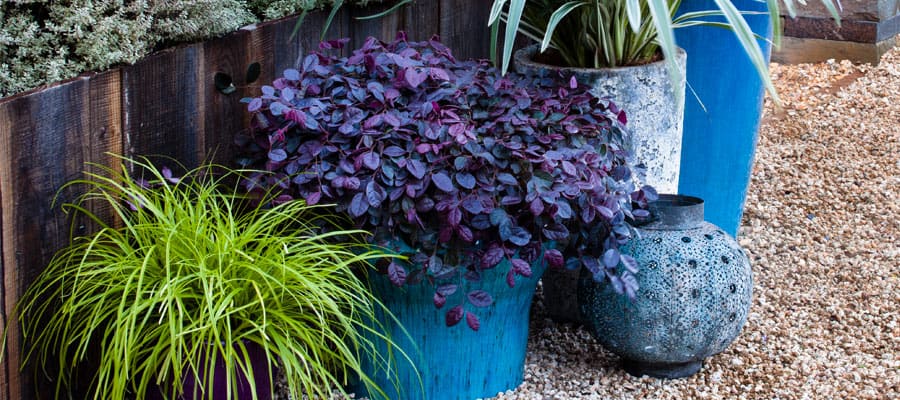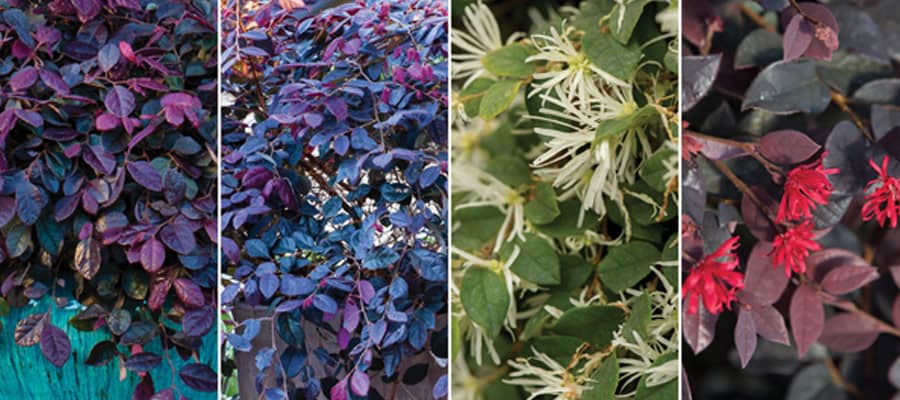
To know a loropetalum is to love one. These gorgeous, easy-care shrubs boast evergreen foliage and a weeping habit that provide great year-round interest for gardeners. That said, even the most trouble-free shrubs need the right conditions in order to perform their best, and loropetalum is no exception. Loropetalums, like rhododendrons and blueberries, prefer acidic soil in the garden (a pH of 4.5-6.5 is ideal), and will show sparse growth, yellowed leaves, and problems absorbing enough iron when planted in soils with a high or alkaline pH.
Luckily, many areas of Northern California and the Pacific Northwest get lots of rainfall, which leaches calcium and magnesium from the soil and leads to naturally acidic conditions (and happy loropetalums). However, if you live in a dry region and your loropetalums are struggling, an alkaline soil pH could be the culprit. An at-home soil test can give you an idea of where you fall on the pH continuum. However, it’s always best to send your soil in for a professional soil test to confirm, as elements such as the pH of your municipal water can sway the results of a home test. If a high or alkaline pH is causing problems in your garden, here’s how to fix it.
Granular sulfur is an economical way of reducing the pH in your soil, and it’s in a form that is easy to apply – simply sprinkle over the surface of the soil, and water it in. You’ll see results in the soil pH after about three months. Because sandy soils will need less sulfur than clay soils, it’s best to retest the soil three months after application to see if you need to reapply.
Cottonseed meal is an organic fertilizing agent that can be used on its own, or is also found within organic fertilizer blends for acid-loving plants. Loropetalum responds well to fertilizing in spring and early summer, so applying cottonseed meal or an organic fertilizer blend that contains it, is a great way of maintaining a more acidic soil pH.
Pine needles used as mulch are a gentle way of keeping the soil more acidic. If you have pine trees on your property or have friends who do, this free mulch can be yours for the raking! Use a 2- to 3-inch-thick layer of pine needles over the surface of your soil to hold in moisture, reduce weeds, and lower soil pH.
Well-aged compost is always a good choice for the garden, because it works to bring the soil into balance and eliminate the extremes of pH and soil tilth. It will bring both acidic and alkaline soils closer to neutral, as well as helps sandy soils retain moisture and clay soils drain better. Though it won’t acidify an alkaline soil on its own, top dressing the garden with compost on a yearly basis keeps your soil pH from veering too far from neutral.
Peat moss, with a pH of approximately 4.4, is very effective at lowering pH when amended into the top few inches of soil. However, there are environmental concerns about the sustainability of peat moss harvesting, so until more conclusive research has been done, it’s wise to consider peat only as a last resort. From a practical perspective, it’s dry and dusty to work with, and can make the soil repel water if not thoroughly soaked before use.

When given partial shade, occasional deep watering, and slightly acidic soil, loropetalums are no-fuss, easy-going shrubs, which require little care to make a fabulous statement in the garden. Choose from the petite burgundy groundcover Purple Pixie® Loropetalum, which grows only 1 to 2 feet tall by 4 to 5 feet wide; the dark and brooding Purple Diamond® Loropetalum, which is a more standard shrub size of 4 to 5 feet tall; the green foliage and crisp white blooms of Emerald Snow® Loropetalum, which reaches 2 to 3 feet tall and 3 to 4 feet wide; or the compact, burgundy foliage of Red Diamond™ Loropetalum, which also showcases vivid red blooms winter to spring, and sporadically in summer and fall. With all these options, there’s a loropetalum to suit every landscape, and with just a little attention to pH, you can grow this distinctive shrub with ease on the West Coast.
